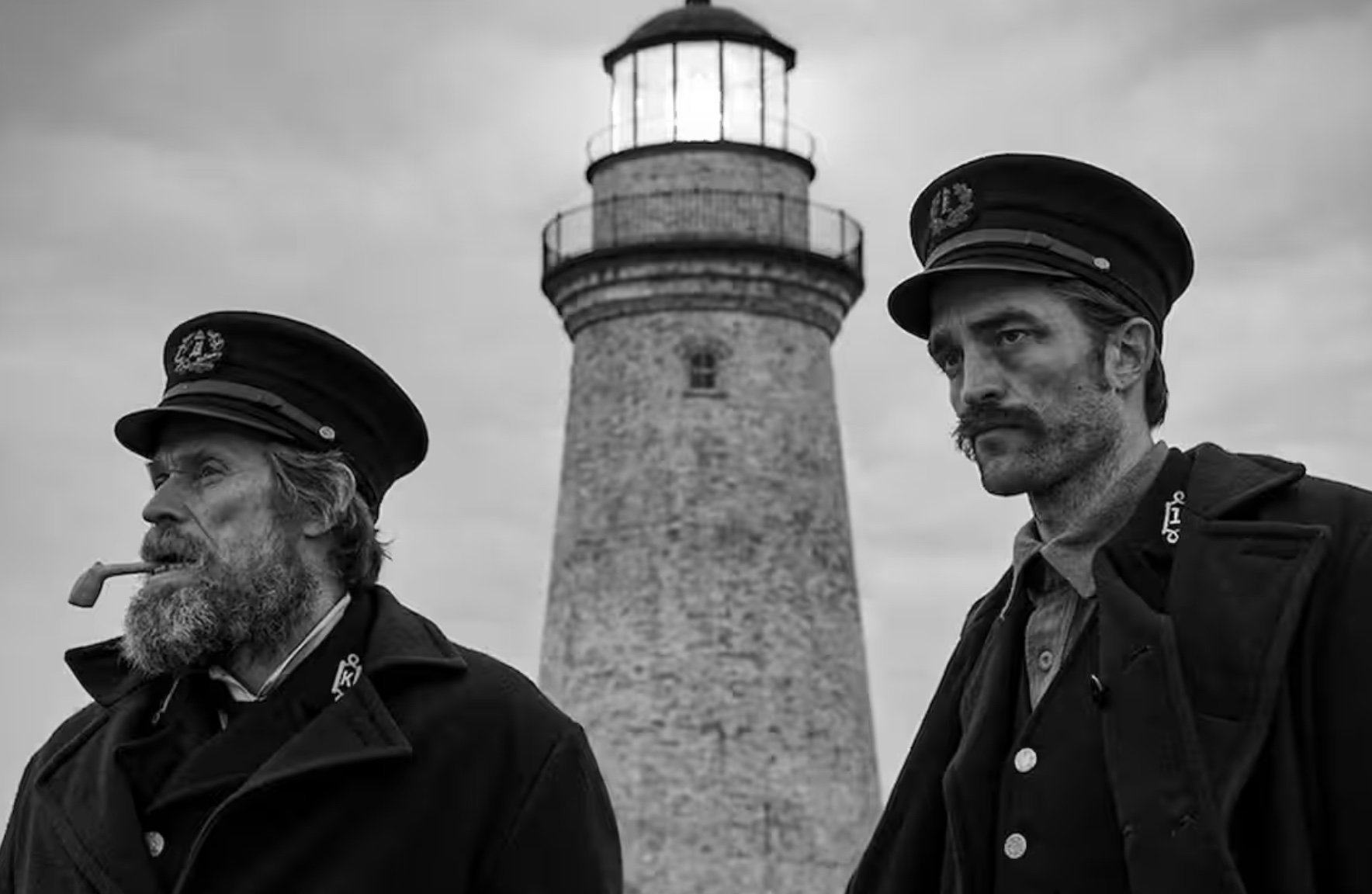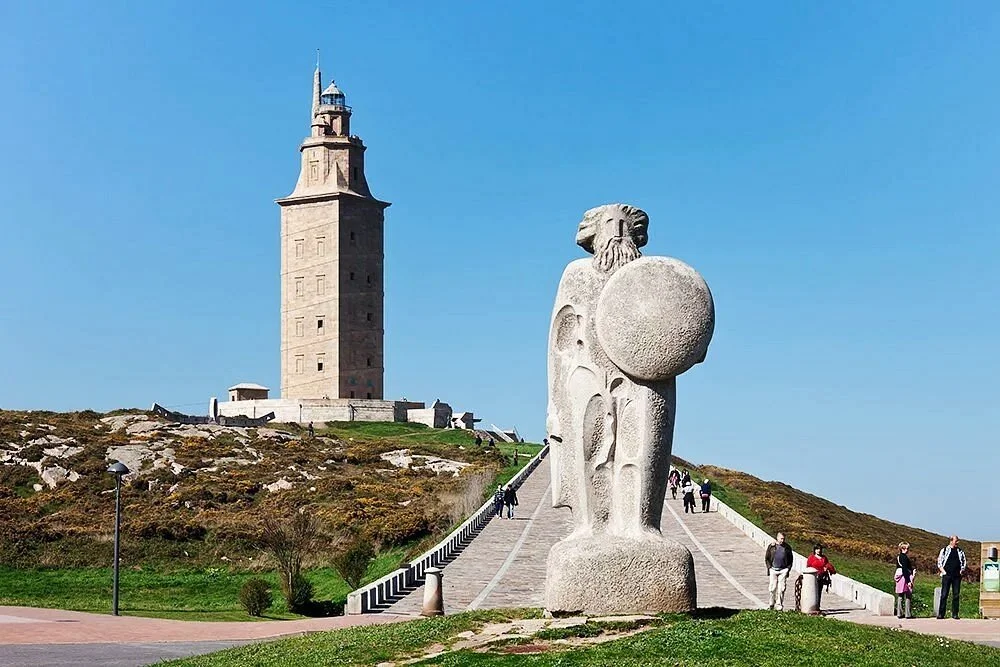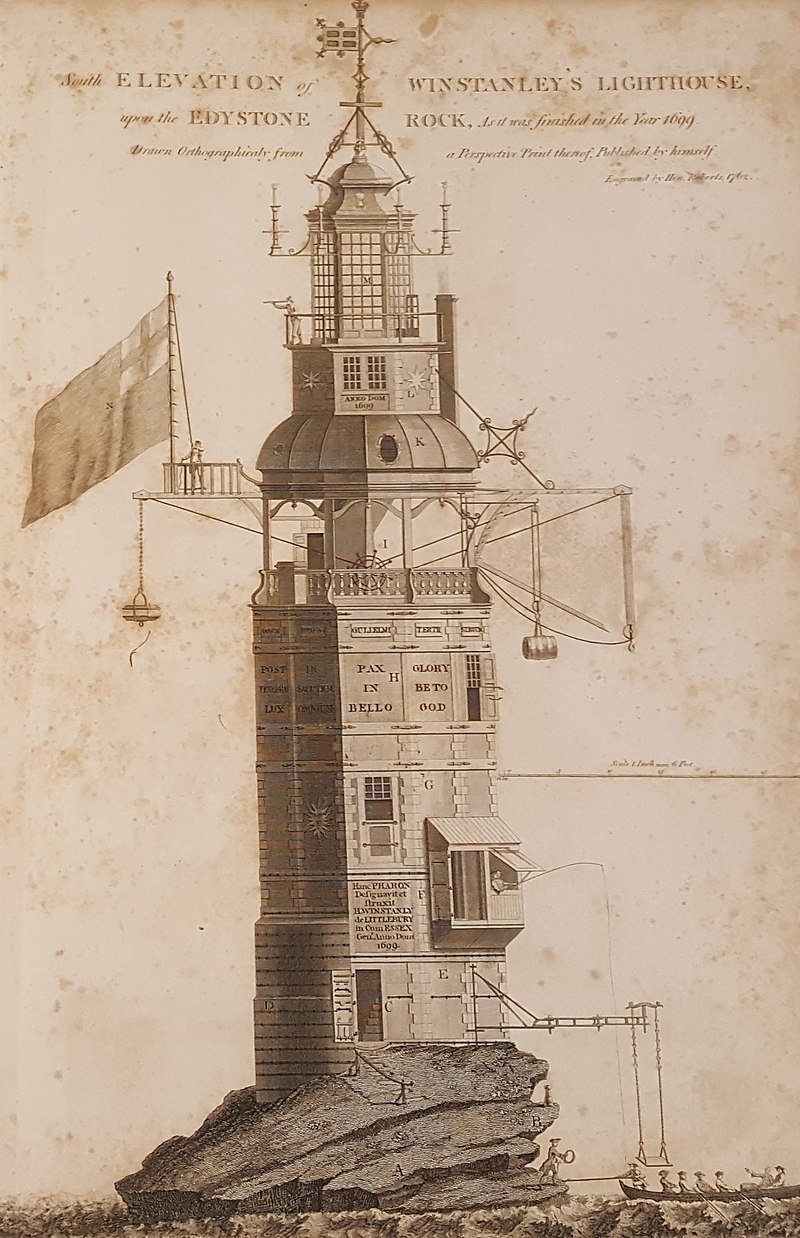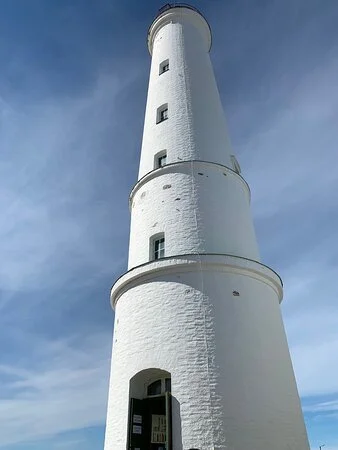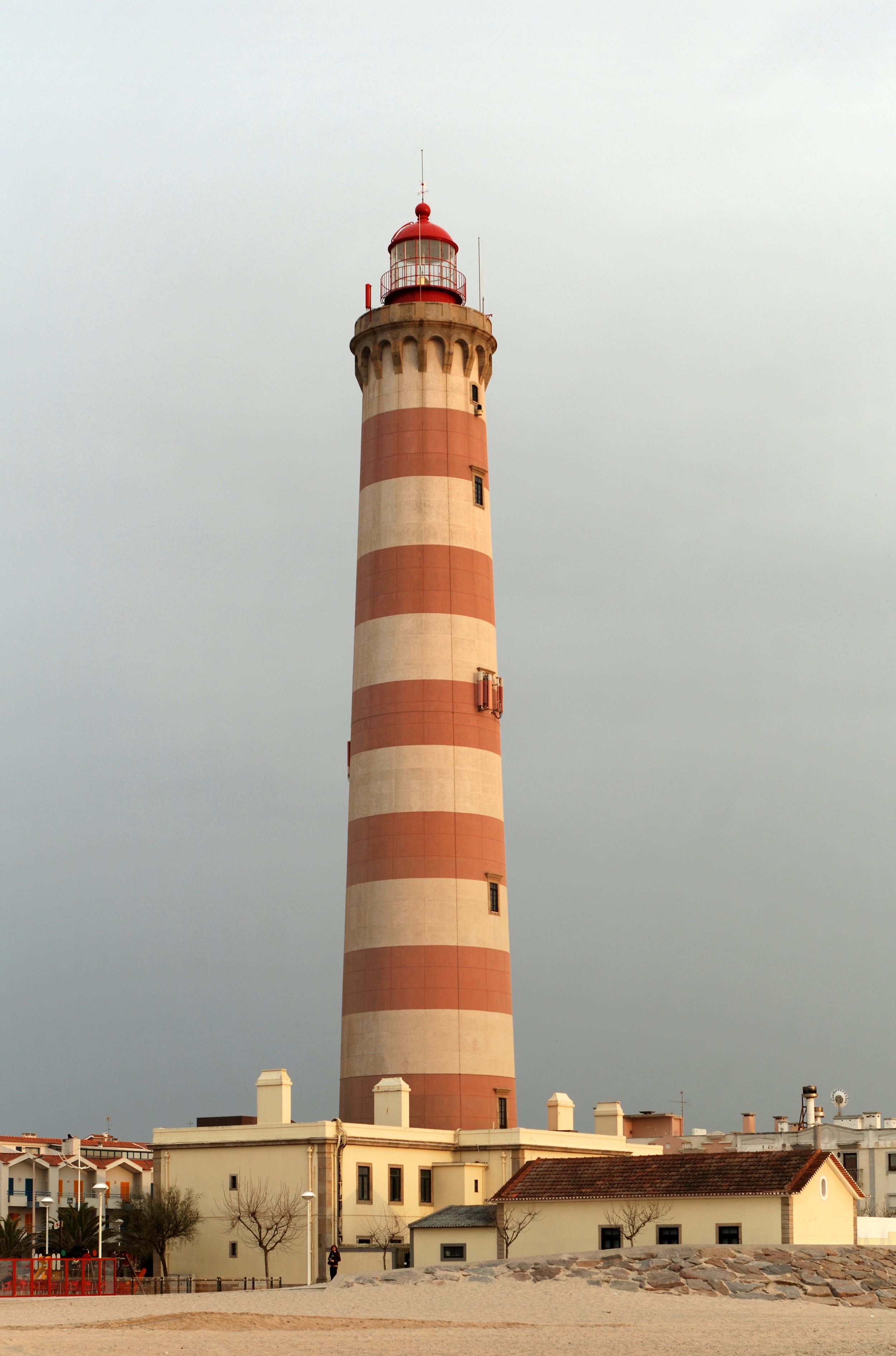By The Landlord
“They are not just stone, brick, metal, and glass. There's a human story at every lighthouse.” – Elinor DeWire, A Quote and a Bucket of Paint
“Music and art are the guiding lights of the world.” – Pablo Picasso
“Lighthouses are more helpful than churches.” – attributed to Benjamin Franklin (from George Seldes, The Great Quotations)
“God built lighthouses to see people through storms. Then he built storms to remind people to find lighthouses.” – Shannon L. Alder
“I can think of no other edifice constructed by man as altruistic as a lighthouse. They were built only to serve.” – George Bernard Shaw
“She is like a revolving light-house — pitch darkness alternating with a dazzling brilliancy.” – Henry James, Washington Square,1880
“The meagre lighthouse all in white, haunting the seaboard, as if it were the ghost of an edifice that had once had colour and rotundity, dripped melancholy tears after its late buffeting by the waves.” – Charles Dickens, Little Dorrit, 1855
“One moment I gaz’d from the hill’s gentle slope,
All hush’d was the billows’ commotion,
And tho’t that the Light-house look’d lovely as Hope,
That star of life’s tremulous ocean.” – Thomas Moore, The Light House, 1811
“What is the meaning of life? That was all – a simple question; one that tended to close in on one with years, the great revelation had never come … Instead, there were little daily miracles, illuminations, matches struck unexpectedly in the dark; here was one.” – Virginia Woolf, To The Lighthouse, 1927
“A writer should be more like a lighthouse keeper, just out there by himself. He shouldn't get his ideas from other people all around him.” – Robert M. Pirsig
“Inside my empty bottle
I was constructing a lighthouse
While all the others
Were making ships.”– Charles Simic, Solving the Riddle, from Return To A Place Lit by a Glass of Milk, 1974
Edifices of illumination, saviours of sailors, guiding beacons of brilliance, lumens of loneliness. Technology means lighthouses are generally unmanned these days, but there’s a stormy, rocky history of romance and mythology surrounding them, extending also into metaphor beyond the shores of pure maritime context.
What do lighthouses, their keepers and other forms of guiding light represent? Beacon bringers of hope, or fluorescent flashes of faith, shining source of sanity, or other glowing gleams of guidance? Maybe isolated souls, out on the edge of society, stuck on the pointed end of the peninsula, the unsung heroes on the craggy limb of humanity? There’s a lot of light to shed, stories and songs to explore here.
This week, then, we steer towards, but also around the headland on this theme, one that contains a fascinating contradiction – a light to attract attention, but one also to avoid. One that beckons, but also warns away.
Guiding lights, whether real or metaphorical, human or other, might also have a quasi-religious, star-like or heroic context – follow them, admire them, use them, but get too close and you might be ruined, shipwrecked or burned. Perhaps society is in current dire need of some guiding lights. So however you interpret this, lighthouses, and other illuminated guides, or representative ideas or people, are a grand construction representing many of our contradictions, and as lyrical subject matter, will hopefully be a shining source of song inspiration.
But first, a brief history of the literal form of lighthouse. In Britain and many other western countries, before lighthouses, signals from coast, or on top of towers and castles, were more basic, sent by burning beacons, piles of wood and oil set alight. When, for example, the Spanish Armada was spotted off the Lizard on the Cornish coast on 19th July 1588, an English ship conveyed the news and a series of beacons were lit along the coast to spread the warning. Beacons were, in a sense, the original burning-issue telegraph system.
Yet lighthouses go back to the sophistication innovation of Ancient Egypt, notably during the reign of Ptolemy II Philadelphus (280–247 BC), the most famous being the famous Lighthouse or Pharos of Alexandria, thought to have been at least 100 metres high and one of the seven wonders of the ancient world, surviving for hundreds of years until it was left in ruins by three earthquakes between 956 and 1323 AD. Its construction has been recreated by various artists, some squarer in form, others more ornate, like this painting:
Lighthouse of Alexandria - painting by Philip Galle; 1572, in the Rijksmuseum, Amsterdam
In evidence on coins, mosaics and other artefacts, other lighthouses are known to have been built by the Ancient Romans such as port at Ostia, with another at Laodicea in Syria. Another famous early construction, but which still survives in restored form, is the Roman-built Tower of Hercules at A Coruña in Spain, one with spiral pattern on the wall to show where there once initially supported a ramp to climb to the top before the internal spiral staircase.
Tower of Hercules in Spain, with namesake on guard
The 17th and 18th centuries saw many springing up against the elements, with improvements in design, spurred by the British and other nations’ acceleration in trade and a series of tragic shipwrecks, in particular at Eddystone Rock off Plymouth Sound. This was a particularly hazardous location for mariners on the English Channel. Henry Winstanley built the first one at that location from 1696 to 1698, with an octagonal wooden structure anchored by 12 iron stanchions secured in the rock, and it was the first tower in the world to have been fully exposed to the open sea. A bold, brave idea, but the ravages of the waves eventually toppled it.
Winstanley lighthouse, Eddystone Rock, illustrated by Jaaziell Johnston, 1813
Pioneering civil engineer John Smeaton rebuilt the lighthouse from 1756 to 1759 remodelling universal design and creating one that remained in use until 1877. Cleverly copying nature’s resilient designs, he created the now classic round lighthouse, inspired by the sturdy trunks of an oak tree, using granite blocks. He rediscovered and used "hydraulic lime", a form of concrete that will set under water used by the Romans, and developed a technique of securing the granite blocks together using dovetail joints and marble dowels.
Other notable landmarks in lighthouse design include the 19th-century almost cake-layered Marjaniemi Lighthouse at Hailuoto island in the near Arctic municipality of Oulu, Finland or at the very other end of Europe, the stripy Lighthouse of Praia da Barra in Portugal.
Marjaniemi Lighthouse. Finland
Lighthouse of Praia da Barra in Portugal
Alexander Mitchell's screw-pile lighthouse really marked the spot, built on piles that were screwed into the sandy or muddy seabed, construction beginning in1838 at the mouth of the Thames where it was known as the Maplin Sands lighthouse, and first lit in 1841, although it was just beaten to illumination by the Wyre Light in Fleetwood, Lancashire in 1840.
Lighthouses are inspire a sense of romance in their isolated beauty, but also some human and chemical illumination in how their emitted their signal. Requiring constant burning of fuel, fire of course was vulnerable to the elements. Before electricity, a key improvement came in the form of the Argand lamp, invented in 1782 by the Swiss scientist Aimé Argand using a steady smokeless flame. Early models used ground glass which was sometimes tinted around the wick, later replaced by a mantle of thorium dioxide suspended over the flame, creating a bright, steady light, burning whale oil, colza, even olive or other vegetable oil as fuel, supplied by a gravity feed from a reservoir mounted above the burner. Matthew Boulton, in partnership with Argand, produced the first in in 1784, and it became the standard for lighthouses for over a century. So until well into the 20th century no lighthouse could function without those there to run them. American seaman and designer Winslow Lewis later borrowed heavily from the Argand design to create lights that shone from many lighthouses.
Winslow Lewis lighthouse lamp inspired by Aimé Argand’s original design
Whether now enjoyed more as architectural landmarks or even as hotels, lighthouse history is rich, but as prolific lighthouse historian and writer Elinor DeWire says up top, there’s much more to them than their building and technological materials – it’s the people and stories that illuminate them. So tales of saved shipwrecks, tragic or heroic, might provide inspiration too as well as even darker themes where guidance goes a bit wrong.
To spark that, here’s a couple of examples from relatively recent film. First up, the brilliantly vivid and bonkers story of two lighthouse keepers in The Lighthouse, Robert Eggers’ 2019 movie starring Willem Dafoe and Robert Pattinson, as a perilous pair out on the mental edge in an isolated tower off the New England coast in 1890s. Dafoe plays Tom Wake, a salty, stern, fairly vicious veteran ‘wickie’ with a mystery leg injury. Pattinson plays the gradually getting angrier younger man he orders around. As they take over from two others to begin their fraught four-week shift, with storms raging, the mission and light still turning, days and nights passing, madness descends …
And finally, a whisper of a song suggestion, just a clip taken from Frank, the 2014 film starring Michael Fassbender, Domhnall Gleeson and Maggie Gyllenhaal, based on the book by Jon Ronson inspired by his brief time with the alternative Manchester performer and comedian Frank Sidebottom.
Being myself a Mancunian, who was long and fully appreciative, even being friends of fellow performers with the original, sparkily fun Frank Sidebottom from Timperley, aka Chris Sievey, that nasal-voiced, anarchic giant-head-wearing prolific singer and cartoonist, this Americanised version of an alternative “Frank”, but still using his big-eyed head design, was initially not to my liking. But once I got round that, and taking this more as a depiction of the craziness of outsider Beefheart-style creativity, I got to enjoy it. In this later scene, relationships having completely broken down and with Frank disappearing, band member keyboardist Gyllenhaal, with the remaining two others, attempts a gentle cover version, very different from the early 70s jaunty original, that beautifully sums up the love and fragility of this kind of inspirational, isolated character, who suddenly then reappears, bareheaded, and without the Frank mask …
So then, from where will your inspiration be beamed on this literal and metaphorical subject? This week’s guiding light is the ever knowledgeable Nicko! Place your songs in comments below for deadline at 11pm UK time, for playlists published next week. It should be most illuminating … time to shine.
New to comment? It is quick and easy. You just need to login to Disqus once. All is explained in About/FAQs ...
Fancy a turn behind the pumps at The Song Bar? Care to choose a playlist from songs nominated and write something about it? Then feel free to contact The Song Bar here, or try the usual email address. Also please follow us social media: Song Bar Twitter, Song Bar Facebook. Song Bar YouTube, and Song Bar Instagram. Please subscribe, follow and share.
Song Bar is non-profit and is simply about sharing great music. We don’t do clickbait or advertisements. Please make any donation to help keep the Bar running:

